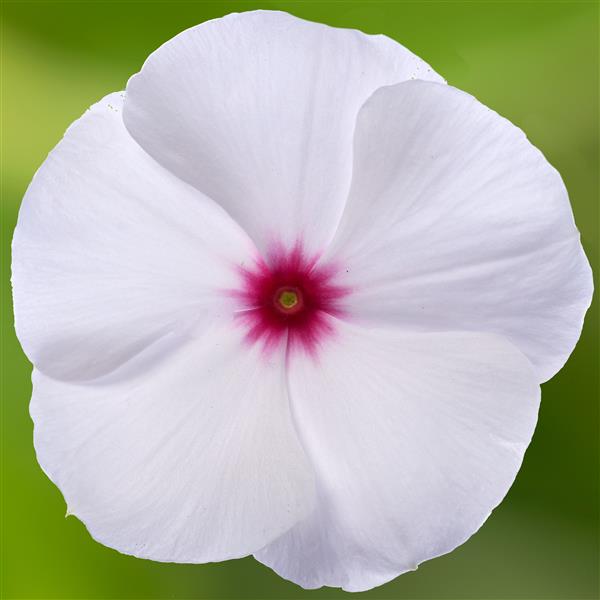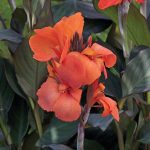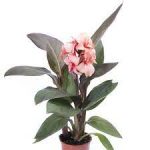Vinca, Cora Cascade XDR Polka Dot
Price range: $2.49 through $8.99
Discount per quantity
| Quantity | 3 - 8 | 9 - 14 | 15+ |
|---|---|---|---|
| Price | Price range: $2.42 through $8.72 | Price range: $2.34 through $8.45 | Price range: $2.24 through $8.09 |
| % Discount | 3% | 6% | 10% |
Description
Vinca ‘Cora Cascade XDR Polka Dot’: A Playful Trailing Annual for Sunny Gardens
Vinca ‘Cora Cascade XDR Polka Dot’ is one of the most eye-catching varieties in the Cora Cascade XDR series. With crisp white petals dotted by a vivid rose-pink eye, it brings cheerful contrast and trailing growth to hanging baskets, containers, and sunny garden beds. Known for its exceptional disease resistance and nonstop blooms, this vinca is perfect for gardeners who want a low-maintenance plant with high visual impact.
This guide covers everything you need to know about Vinca ‘Cora Cascade XDR Polka Dot’ — from planting and care tips to design inspiration and seasonal performance.
A Whimsical Bloom Pattern
The flowers of ‘Cora Cascade XDR Polka Dot’ feature pure white petals accented by a bold pink eye at the center — resembling playful polka dots when viewed en masse. Each bloom measures about 1.5–2 inches across, and they appear continuously from late spring until frost.
The clean white and pink combination fits effortlessly into mixed color schemes, pairing well with both pastels and brights for versatile garden design.
Growth Habit and Size
- Height: 6–8 inches tall
- Spread/Trailing Length: 18–36 inches wide or trailing over container edges
- Habit: Spreading and cascading, perfect for baskets, window boxes, and sunny borders
The glossy, dark green foliage forms a lush backdrop for the cheerful blooms, maintaining a tidy, attractive appearance throughout the season.
XDR: Extra Disease Resistance
The “XDR” in its name stands for Extra Disease Resistance. This series is specifically bred to resist aerial phytophthora, a fungal disease that often plagues vinca in humid climates. This trait ensures healthier plants, fewer maintenance concerns, and reliable performance in challenging summer conditions.
Best Growing Conditions
Sunlight
Thrives in full sun — at least 6–8 hours daily. Full sun promotes dense growth and abundant blooms, though light afternoon shade is tolerated in extremely hot regions.
Soil
Prefers well-drained soil. Sandy or average garden soils work well; avoid heavy, soggy soils that may cause root problems.
Heat and Drought Tolerance
This variety excels in hot, dry conditions where many annuals struggle, continuing to bloom through midsummer heat waves.
Planting Guide
- Timing: Plant in late spring after all danger of frost has passed.
- Spacing: Allow 12–18 inches between plants for proper airflow and room to trail.
- Soil Preparation: Loosen soil and amend with compost for improved drainage and fertility.
- Watering at Planting: Water thoroughly to settle roots, then reduce frequency as plants establish.
Watering and Fertilizing
- Watering: Moderate needs — water deeply during establishment, then let soil dry slightly between waterings. Avoid constant moisture.
- Fertilizing: Apply a balanced, water-soluble fertilizer every 4–6 weeks during the growing season to maintain healthy growth and blooms.
Maintenance and Care
- Deadheading: Not required; flowers are self-cleaning.
- Pruning: Trim trailing stems lightly if they become too long or to encourage fuller branching.
- Pests and Diseases: Naturally resistant to major diseases; occasional aphids or whiteflies can be managed with insecticidal soap or a strong stream of water.
Seasonal Performance
- Spring: Establishes quickly in warming soil and begins flowering early.
- Summer: Peak bloom period; thrives even in extreme heat and sun.
- Fall: Continues flowering until frost, offering late-season color when other annuals fade.
Design and Landscape Uses
The trailing form and polka-dot blooms make this variety perfect for:
- Hanging baskets and window boxes: Creates cascading displays of white and pink.
- Mixed containers: Pairs beautifully with upright plants like angelonia, salvia, or ornamental grasses.
- Groundcover: Spreads across sunny beds for a cheerful carpet of blooms.
- Mass plantings: Delivers bold color impact with minimal maintenance.
Color Combinations
- Pair with deep purple or magenta flowers for striking contrast.
- Combine with soft pinks and lavenders for a pastel palette.
- Mix with silver foliage plants like dusty miller for a modern, elegant look.
Why Gardeners Love It
- Continuous blooms from spring to frost
- Heat and drought tolerance for effortless summer performance
- Extra disease resistance for reliability in humid climates
- Cascading habit ideal for hanging baskets and containers
- Playful polka-dot pattern for unique color displays
Companion Plants
‘Cora Cascade XDR Polka Dot’ pairs beautifully with:
- Calibrachoa (similar trailing habit with complementary colors)
- Angelonia (upright flower spikes for height contrast)
- Coleus (bold foliage for texture and color balance)
- Sweet Potato Vine (lush trailing greenery for added fullness)
- Zinnias or marigolds (bright sun-loving companions)
Overwintering Tips
Vinca is grown as an annual in most climates (zones 2–9). In frost-free zones (zones 10–11), it can act as a tender perennial. In colder regions, treat as an annual or take stem cuttings in late summer to root and overwinter indoors for next season’s planting.
A Playful Waterfall of Color
Planting Vinca ‘Cora Cascade XDR Polka Dot’ adds a cheerful cascade of pink-and-white blooms to any sunny space. Its trailing habit, reliable performance in heat and humidity, and charming polka-dot flowers make it a go-to choice for hanging baskets, groundcover, and mixed containers.
From spring through fall, this plant delivers effortless color and lively personality — proving that easy care and standout beauty can truly go hand in hand.
Additional information
| Weight | N/A |
|---|---|
| Options | Seed 10 count, Starter Plug – 3 count, 4 in. (16.9 fl. oz.) Pot |





